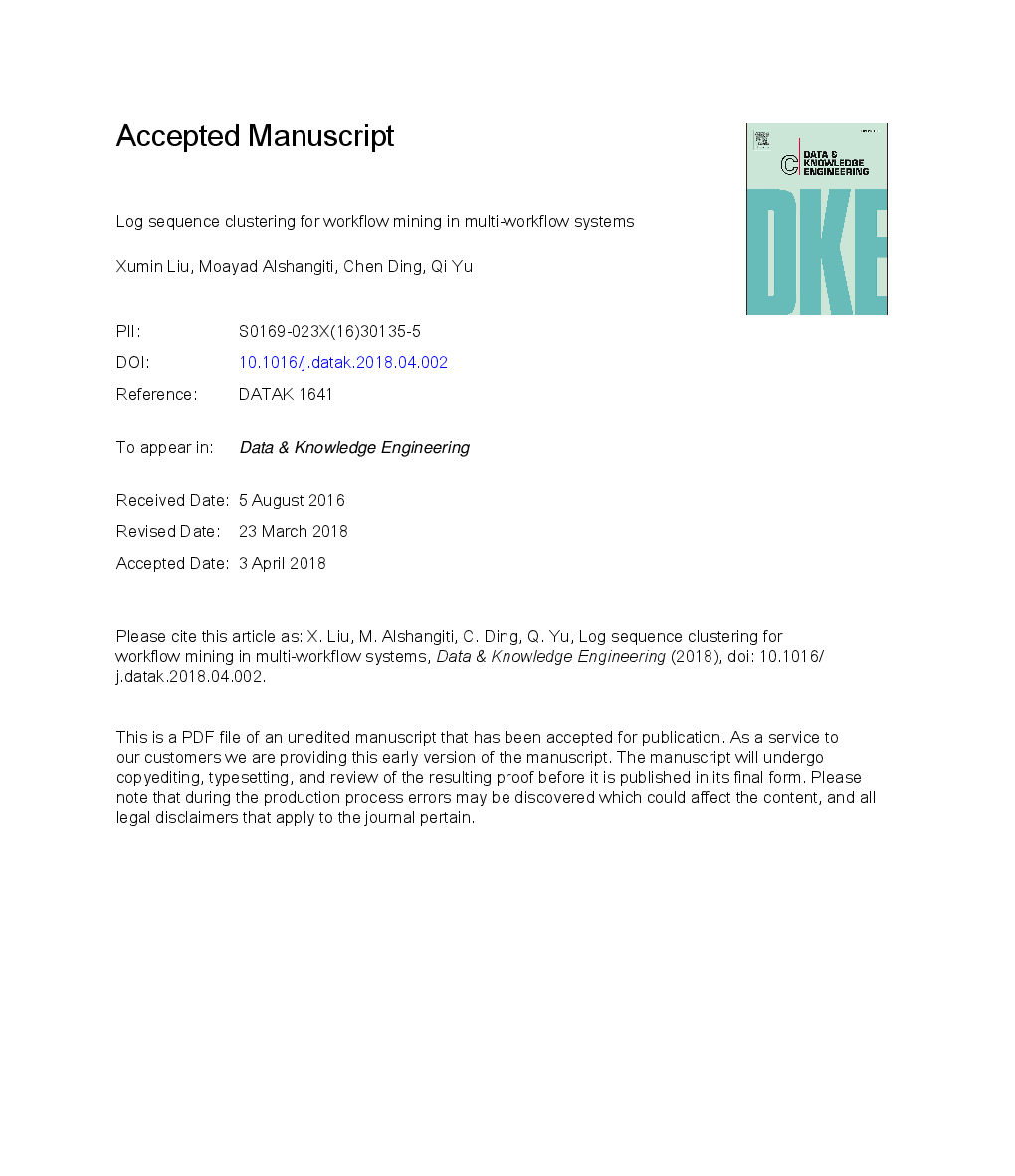ترجمه فارسی عنوان مقاله
خوشه دنباله ورود به سیستم برای استخراج گردش کار در سیستم های چند کاره
عنوان انگلیسی
Log sequence clustering for workflow mining in multi-workflow systems
| کد مقاله | سال انتشار | تعداد صفحات مقاله انگلیسی |
|---|---|---|
| 161600 | 2018 | 38 صفحه PDF |
منبع

Publisher : Elsevier - Science Direct (الزویر - ساینس دایرکت)
Journal : Data & Knowledge Engineering, Available online 12 April 2018
ترجمه کلمات کلیدی
کار معدنکاری، خوشه بندی توالی، الگوی رفتار کاربر درخت پیش فرض احتمالی، تقسیم ماتریس غیر منفی،
کلمات کلیدی انگلیسی
Workflow mining; Sequence clustering; User behavior pattern; Probabilistic suffix tree; Non-negative matrix factorization;

